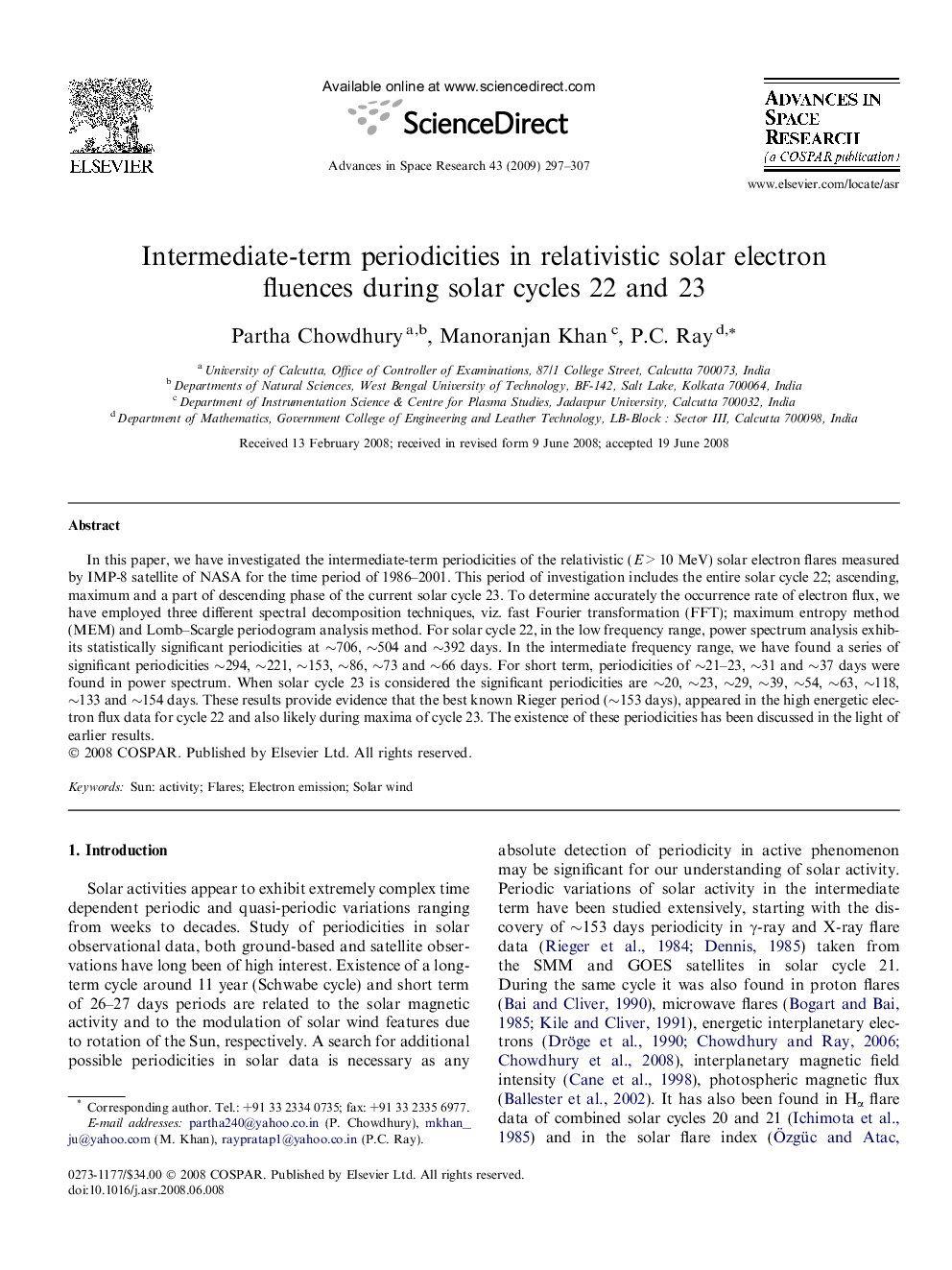| Article ID | Journal | Published Year | Pages | File Type |
|---|---|---|---|---|
| 1767549 | Advances in Space Research | 2009 | 11 Pages |
Abstract
In this paper, we have investigated the intermediate-term periodicities of the relativistic (EÂ >Â 10Â MeV) solar electron flares measured by IMP-8 satellite of NASA for the time period of 1986-2001. This period of investigation includes the entire solar cycle 22; ascending, maximum and a part of descending phase of the current solar cycle 23. To determine accurately the occurrence rate of electron flux, we have employed three different spectral decomposition techniques, viz. fast Fourier transformation (FFT); maximum entropy method (MEM) and Lomb-Scargle periodogram analysis method. For solar cycle 22, in the low frequency range, power spectrum analysis exhibits statistically significant periodicities at â¼706, â¼504 and â¼392 days. In the intermediate frequency range, we have found a series of significant periodicities â¼294, â¼221, â¼153, â¼86, â¼73 and â¼66 days. For short term, periodicities of â¼21-23, â¼31 and â¼37 days were found in power spectrum. When solar cycle 23 is considered the significant periodicities are â¼20, â¼23, â¼29, â¼39, â¼54, â¼63, â¼118, â¼133 and â¼154 days. These results provide evidence that the best known Rieger period (â¼153 days), appeared in the high energetic electron flux data for cycle 22 and also likely during maxima of cycle 23. The existence of these periodicities has been discussed in the light of earlier results.
Related Topics
Physical Sciences and Engineering
Earth and Planetary Sciences
Space and Planetary Science
Authors
Partha Chowdhury, Manoranjan Khan, P.C. Ray,
